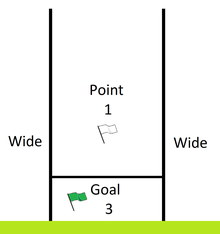
Gaelic football, commonly known as simply Gaelic, GAA or Football is an Irish team sport. A form of football, it is played between two teams of 15 players on a rectangular grass pitch. The objective of the sport is to score by kicking or punching the ball into the other team's goal or between two upright posts above the goal and over a crossbar 2.5 metres above the ground.
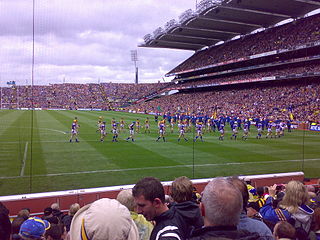
Hurling is an outdoor team game of ancient Gaelic Irish origin, played by men. One of Ireland's native Gaelic games, it shares a number of features with Gaelic football, such as the field and goals, the number of players and much terminology. The same game played by women is called camogie, which shares a common Gaelic root.
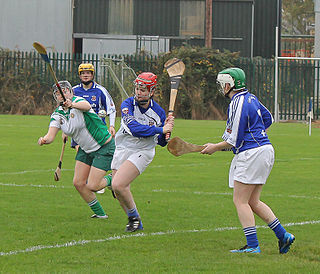
Camogie is an Irish stick-and-ball team sport played by women. Camogie is played by 100,000 women in Ireland and worldwide, largely among Irish communities.

In sport, a goal may refer to either an instance of scoring, or to the physical structure or area where an attacking team must send the ball or puck in order to score points. The structure of a goal varies from sport to sport, and one is placed at or near each end of the playing field for each team to defend. For many sports, each goal structure usually consists of two vertical posts, called goal posts, supporting a horizontal crossbar. A goal line marked on the playing surface between the goal posts demarcates the goal area. Thus, the objective is to send the ball or puck between the goal posts, under or over the crossbar, and across the goal line. Other sports may have other types of structures or areas where the ball or puck must pass through, such as the basketball hoop. Sports which feature goal scoring are also commonly known as invasion games.
The penalty shootout is a method of determining a winner in sports matches that would have otherwise been drawn or tied. The rules for penalty shootouts vary between sports and even different competitions; however, the usual form is similar to penalty shots in that a single player takes one shot on goal from a specified spot, the only defender being the goalkeeper. If the result is still tied, the shootout usually continues on a "goal-for-goal" basis, with the teams taking shots alternately, and the one that scores a goal unmatched by the other team is declared the winner. This may continue until every player has taken a shot, after which players may take extra shots, until the tie is broken, and is also known as "sudden death".

International rules football is a team sport consisting of a hybrid of football codes, which was developed to facilitate international representative matches between Australian rules football players and Gaelic football players.

Gaelic games are a set of sports played worldwide, though they are particularly popular in Ireland, where they originated. They include Gaelic football, hurling, Gaelic handball and rounders. Football and hurling, the most popular of the sports, are both organised by the Gaelic Athletic Association (GAA). Women's versions of hurling and football are also played: camogie, organised by the Camogie Association of Ireland, and ladies' Gaelic football, organised by the Ladies' Gaelic Football Association. While women's versions are not organised by the GAA, they are closely associated with it but are still separate organisations.
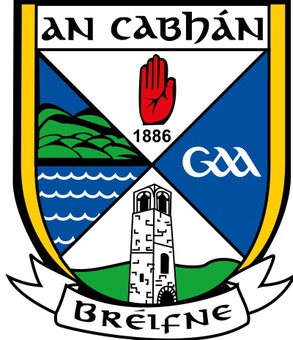
The Cavan County Board or Cavan GAA is one of the 32 county boards of the Gaelic Athletic Association (GAA) in Ireland, and is responsible for the administration of Gaelic games in County Cavan.
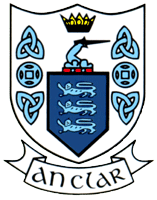
The Clare County Board of the Gaelic Athletic Association (GAA) or Clare GAA is one of the 32 county boards of the GAA in Ireland, and is responsible for Gaelic games in County Clare. Clare plays its home games at Cusack Park in Ennis.

The Kilkenny County Board of the Gaelic Athletic Association is one of the 32 county boards of the GAA in Ireland and is responsible for Gaelic games in County Kilkenny. The county board has its head office and main grounds at Nowlan Park and is also responsible for Kilkenny county teams in all codes at all levels. The Kilkenny branch of the Gaelic Athletic Association was founded in 1887.
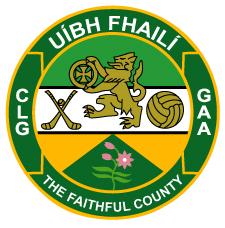
The Offaly County Board of the Gaelic Athletic Association (GAA) or Offaly GAA is one of the 32 county boards of the GAA in Ireland, and is responsible for Gaelic games in County Offaly. Separate county boards are also responsible for the Offaly county teams.

The Down County Board or Down GAA is one of the 32 county boards of the Gaelic Athletic Association (GAA) in Ireland, and is responsible for the administration of Gaelic games in County Down,.
The Mayo County Board of the Gaelic Athletic Association (GAA) or Mayo GAA is one of the 32 county boards of the GAA in Ireland, and is responsible for Gaelic games in County Mayo and the Mayo county teams.

The Monaghan County Board of the Gaelic Athletic Association (GAA) or Monaghan GAA is one of the 32 county boards of the GAA in Ireland, and is responsible for Gaelic games in County Monaghan and the Monaghan county football and hurling teams. Separate county boards are responsible for the promotion & development of handball, camogie and ladies' football within the county, as well as having responsibility for their representative county players/teams. The current team sponsor of Monaghan GAA is Investec.
The following is an alphabetical list of terms and jargon used in relation to Gaelic games. See also list of Irish county nicknames, and these are very interesting.
Composite rules shinty–hurling – sometimes known simply as shinty–hurling – is a hybrid sport of shinty and hurling which was developed to facilitate international matches between the two sports.

Australian rules football and Gaelic football are codes of football, from Australia and Ireland respectively, which have similar styles and features of play. Notably both are dominated by kicking from the hand and hand passing as well as rules requiring the ball is bounced by a player running in possession, both have a differentiated scoring system, with higher and lower points values for different scoring shots, both have no offside rule, and both allow more physical contact and players on the field than other football codes - 15 in gaelic football, 18 in Australian Rules.
The 1982 All Ireland Camogie Championship was won by Cork, beating Dublin by a single point in the final.
The 1964 inaugural All-Ireland Senior Club Camogie Championship for the leading clubs in the women's team field sport of camogie was won by Celtic, who defeated Deirdre in the final, played at Croke Park. The attendance at the final included Séamus Ó Braonáin, who had refereed the very first camogie matches in 1904 and his wife, Brigid Dillon who played in the practice match in the Phoenix Park and the first camogie match in Navan. An anonymous donor provided an unusual silver cup, known as the ‘Jubilee Cup’, which Celtic Camogie Club were allowed to keep.

A comparison of Gaelic football and rugby union is possible because of certain similarities between the codes, as well as the numerous dissimilarities.
